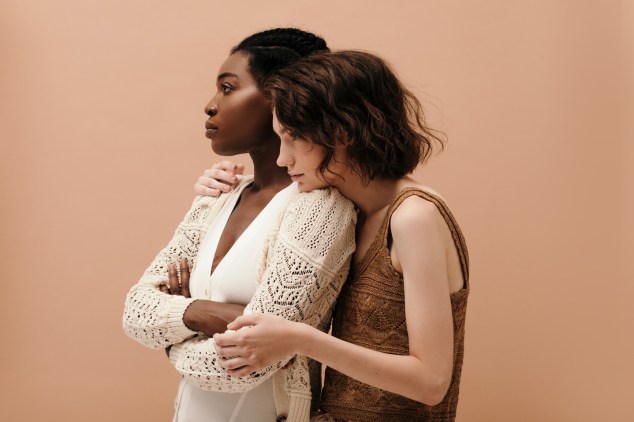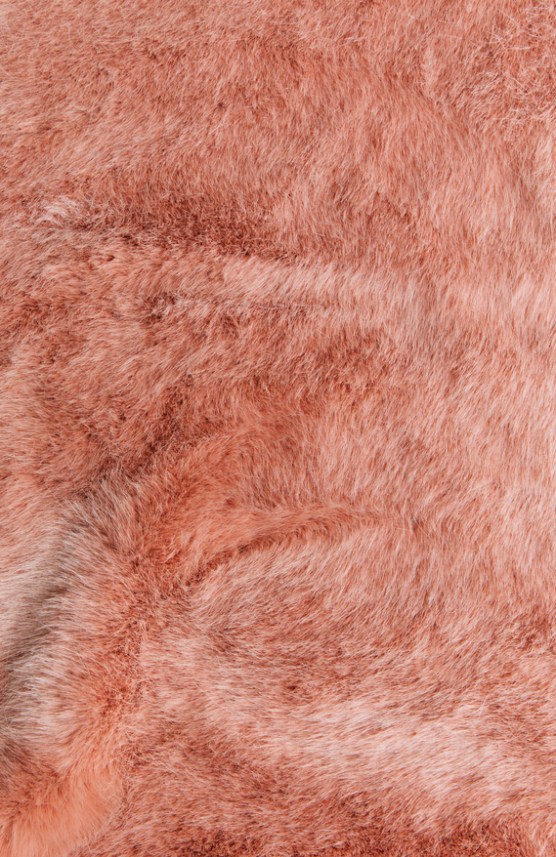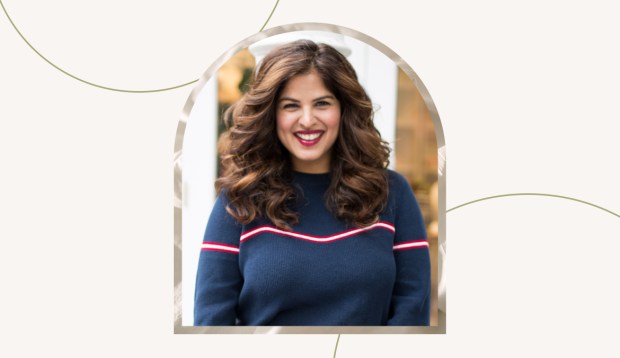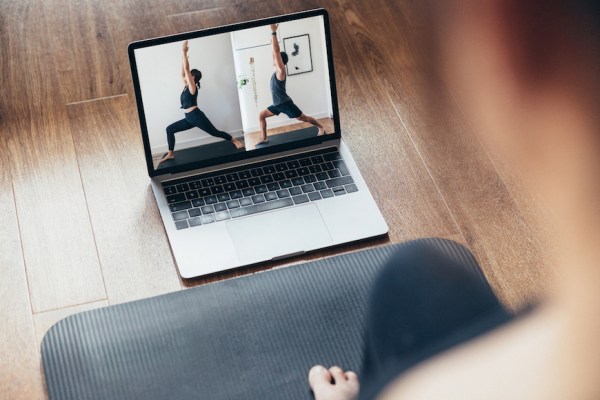Self Care


The Big Picture
In a year that’s brought a pandemic threatening our very existence, a societal reckoning with systemic racism, and an election season fueled by hate not hope, it’s never been clearer how crucial it is to look after our own needs—emotional, mental, and spiritual. Practicing self care has often meant buying products and experiences to facilitate comfort and happiness, but with rates of loneliness and a number of other mental-health concerns surging, the pandemic has forced us to expand our understanding of what it means to effectively fill our own cup and heal with the help of both commodities and community.
“Self care is really important in tough times, but I think we often get the self care wrong,” says happiness expert Laurie Santos, PhD, professor of Yale University’s “Science of Well-Being” course, which has seen nearly 2.5 million enrollments on Coursera since mid-March. “We think it’s only about a nice bubble bath or a glass of wine alone, but the research shows that effective self care often looks a lot more like community care.” (For example, buying things for others has been shown to yield more happiness than buying for the self.)
Sarah Adler, PsyD, clinical director of Octave, says community care—that is, connecting with people who are as interested in helping you as you are in helping them—is at the heart of any effective self-care practice, particularly during pandemic times. "Human beings are social and desperately need connections with other people,” she says. But we’re also resilient, and the solitary time many have spent inside has made room for new connective habits to emerge. A lot of that is thanks to the proliferation of virtual communities, which have provided access for so many people to meet remotely and have facilitated self care and healing. Many consumers have realized that these relationships are much more supportive of their self worth and mental health than buying a new candle or moisturizing face mask.
“Self care is really important in tough times, but I think we often get the self care wrong. We think it’s only about a nice bubble bath or a glass of wine alone, but the research shows that effective self care often looks a lot more like community care.” Laurie Santos, PhD
The internet has always provided access to various communities, but their breadth has increased during the pandemic, widening connection opportunities without geography being an issue—and consumers are into it. Take, for example, Zoom, which has mostly served as a video-conferencing platform for corporations since launching in 2013, but became a household name (and a veritable verb) by the end of this past March. Chief marketing officer Janine Pelosi says Zoom’s mission has “always been about connecting folks via knowledge and an exchange of ideas…but how much this is happening on the platform today, none of us could have predicted.” With 355 percent growth this year, Zoom now regularly sees nearly 3 million daily meeting participants, who are not only working but hosting happy hours, birthdays, and even weddings on the platform. And they’re predicted to use it for even more events into 2021: In October, the company launched OnZoom (still in beta), which will allow users to monetize hosted events like fitness classes on the platform.
Meetup, another global online platform, was created 18 years ago for the express purpose of connecting people to build in-person local communities. In March, it began hosting virtual events for the first time ever to meet shifting needs for human connection. “We used to say we use technology to get people off of technology. Now we say we use technology to build community—both community online and community in person,” says David Siegel. In its first six months, there have been 1.2 million online Meetup events with close to 10 million attendees, he adds.
For Naj Austin, founder and CEO of Ethel’s Club, a healing community for Black, Indigenous, and people of color (BIPOC), the pandemic forced her to reimagine her brick-and-mortar space as a virtual offering—and the effect has been huge in terms of reach. “The pandemic allowed us to offer our community all over the world, rather than just Brooklyn,” she says, noting that the pre-pandemic Brooklyn-based Ethel’s Club community of 180 has grown to a global digital community of more than 1,000. Other BIPOC-centering wellness communities have seen similar growth during the pandemic: Dive In Well recently launched the Disruption Lab, a membership-based offshoot of its virtual community to nurture collaborative creation; black girls breathing has seen more than 1,000 percent growth in virtual participation; and Sad Girls Club launched Soul Sessions, a free digital therapy offering, this year.
Access that virtual communities provide isn’t just important for connecting people who are geographically distant. As Siegel points out, virtual Meetup events have allowed connection for people who don’t have events in their city in addition to people for whom attending a Meetup event in person would be cost-prohibitive, requiring money for transportation, child care, admission, or otherwise. The ability to find like-minded people is greater than ever before with some of the biggest barriers to doing so being solved virtually.
The pandemic won’t last forever, though, and eventually we’ll feel comfortable connecting in person just as we did before. But that doesn’t mean virtual communities are leaving. Rather, a hybrid model of connection—one that blends real-life experiences with digital offerings to expand access and reach—is here to stay. “I would say we're going to end up being 30 percent online, 70 percent in-person a year post-pandemic, which speaks to the kind of staying power of online,” Siegel says. Nitika Chopra, founder of the just-launched Chronicon Community, a member-based virtual offering to help people in the chronic illness community foster connections, likewise predicts the long-term future for her brand will also include a hybrid style of enriching in-person and virtual connection."
Austin, who plans to launch Somewhere Good, a social platform to connect BIPOC folks with more than 3,000 people currently on the waitlist, in 2021, agrees. “After going global, we found that when you gather like-minded people, they want that feeling all the time,” she says. “Anything that gathers people will always be needed—it just shifts forms.”
Just as the proliferation of online dating didn’t render its in-person counterpart extinct, but rather provided more opportunities for people to find one another, the same can be said for the ways we’ll connect in 2021 and further into a post-pandemic world. That is, virtual communities won’t replace real-life ones but will permanently remain as a tool people can use to satisfy the human need for connection to both care for ourselves and each other—and to heal. As mental-health educator and therapist Minaa B., LMSW, says, "[In 2021,] I'm hoping that we just continue to do the work of taking care of ourselves. I hope that we continue to practice self care and community care, and I hope that we continue to be compassionate to one another."
We Say Yes, Yes, Yes to Self-Pleasure as Self Care
Much in line with Well+Good’s prediction late last year that 2020 would bring a widespread understanding that sexual pleasure is integral to well-being, this year in quarantine has led many to explore and celebrate self-pleasure as a form of self care. According to a June 2020 report by pleasure product brand TENGA, 84 percent of Americans now recognize masturbation as a form of self-care (compared to 44 percent in 2016).
So what can we expect 2021 to hold for the future of sexual health and pleasure? With market projections for the sexual-wellness industry to grow 9.8 percent annually, reaching a valuation of $40.5 billion by 2025, put plainly, we can expect more: more pleasure-focused products that make more sexual exploration possible for more people.
“In 2021, consumers will continue to integrate and approach sexual wellness as a part of their overall self care and will expect that brands do the same,” says Maude founder and CEO Éva Goicochea. “Elevating the design and marketing in an inclusive way has completely resonated with the consumer and has helped destigmatize the category.” In addition to Maude, brands like Cake, Blex Technologies, and Lora DiCarlo are prioritizing inclusivity so all bodies, orientations, and preferences are celebrated—and they’ll continue doing so in 2021.
One way they’re doing so is with the help of celebrities making the brands more well-known, and destigmatizing pleasure products in the process. Actor and model Cara Delevingne recently signed on to the Lora DiCarlo team as co-owner, with plans to expand the brand’s product line to appeal to a wider, more diverse consumer base; singer-songwriter Lily Allen recently released her own special edition Womanizer vibrator, Liberty by Lily Allen; and actor Dakota Johnson just announced she is investing in Maude and also signing on as the brand’s co-creative director.
In addition to sex toys, pleasure market apps that merge masturbation with mind-body wellness will also see growth next year: New sex-therapy app Kama recently received $3 million in funding, as did intimate well-being app EmJoy, which saw subscriptions triple in lockdown. Audio porn platform Dipsea is adding a sleep feature to help listeners enjoy erotica meant to lull them to slumber. And &Jane, an erotic storytelling app, plans to add nonbinary and trans narrators in the coming months.
Another crucial component of the self-pleasure as self care movement centers on unleaning—specifically the narrow, heteronormative, shame-filled version of masturation so many folks learnt growing up. "Every time we talk about sex, every time we bring it either to our Instagram or to our blogs, it's with the lens of 'What can we unlearn?'" says Kiana Reeves, chief education officer of Foria's School of Unlearning, a content platform and workshop series that spotlights inclusive sex educators and offers cources like: Masturbation: A Re-Edcation. Meanwhile, Allbodies, a sexual-wellness platform, offers a popular vaginal masturbation course focused on destigmatizing and normalizing self-pleasure.
Though the projected market growth is broad in the sexual wellness sphere for 2021, one throughline is clear: Recognizing masturbation as self care means going beyond the orgasm. It means creating more intimate, personalized, pleasure-focused experiences that everybody can enjoy… even if the only body you’re enjoying is your own.
Trend Photo: Dame
Shop, Ahem, Self-Care Tools
A New Generation of Youth Wellness Programs Is Growing Up
New launches over the past couple years have made it possible for your kids to do yoga with Elmo and meditate with Barbie. But the coronavirus pandemic—and the resulting closure of the places through which young people gain access to well-being services (e.g. schools, libraries, community centers, and more)—has brought a new urgency to the creation of wellness programs geared towards kids and teens. Pair that with a growing awareness among Gen Z of self care and mindfulness practices as a way to cope with mounting stressors, and wellness is poised for an injection of teen spirit in 2021.
“What I think we're going to see is more [wellness practitioners] will find ways to provide their services in the home. And obviously, digital is a huge part of that,” says Nicole Cardoza, founder of Yoga Foster, a non-profit dedicated to providing educators and students with yoga and mindfulness resources. For Cardoza, this has meant launching Wellemental, a digital app (designed to be sensory-friendly and available in both Spanish and English) extension of Yoga Foster, in late October 2020. Coming up next: a teen-devoted app in 2021.
Other notable 2020 digital launches and expansions dedicated to serving a younger market include the aforementioned Barbie Wellness Collection by Mattel (with corresponding YouTube meditations); new partnerships for the meditation app Headspace with Sesame Street and Snapchat; $12 million in seed funding for Moshi, a sleep app for kids developed by the Calm founder and CEO; and new youth-focused offerings from the uber-popular YouTube yoga instructor Adriene Mischler (over 8.5 million subscribers) and digital fitness platform Obé.
In August, wellness community Naaya began The Check-In, a new initiative designed to break down barriers to well-being for BIPOC youth by giving them access to technology and mindfulness services. “I don't want anyone to be in their 30s and having to unpack all of the stuff that they couldn't unpack when they were younger because they didn't have the tools,” says Naaya founder Sinikiwe Dhliwayo, who plans to expand The Check-In to include free, culturally conscious therapy for teens on a subscription model in 2021.
While it was once parents pushing their kids into “mommy and me” yoga classes, the next generation of youth wellness offerings are rising to meet demand from young people themselves. “What I'm experiencing with Gen Z is that they've grown up with more information about self care,” says Ally Mazerolle, founder of Girlvana, a yoga and wellness program for teen girls, and author of the upcoming Girlvana book (to be released spring 2021). “They’re asking, ‘How can I take care of myself? What do I need?’”
Next year, we’ll see the seeds planted in 2020 take root, with all brands and organizations mentioned above confirming they will continue to build out their slate of services for young folks. Additionally, in the spring, teen clothing brand Hollister will award grants to groups “dedicated to championing confidence and mental wellness in teens across the globe.” And top kids’ yoga video creator Cosmic Kids (1 million YouTube subscribers) will debut a new TV series—while there’s no official launch date yet, Variety reports the program was “fast-tracked.”
“We oftentimes forget that the people that need wellness most right now are the ones to come next,” says Cardoza. Not anymore.
Nicole Cardoza
Trend Photo: Stocksy / Bruce + Rebecca Meissner
Rest Is an Act of Resistance
“Black people in this country have never experienced living free,” Tricia Hersey, activist and founder of The Nap Ministry, an organization that advocates rest as a form of resistance, told Well+Good this summer. “In order to imagine [a new world], you have to be able to dig into a place that’s outside of grind culture and that place is the dream space. We won’t be able to imagine, invent, restore, and rebuild this new liberated world without resting.”
Hersey’s vision isn’t a new one: The Nap Ministry was founded in 2016 after Hersey learned about the role rest and sleep play in healing trauma—particularly for Black Americans, who have been denied that basic right for centuries (during slavery, usually as a deliberate form of punishment). This year, as demands for racial equity in the United States reached a fever pitch following the murder of George Floyd, the idea of “rest as resistance” took hold of the collective consciousness in a new way; The Nap Ministry’s Instagram following, for instance, grew by 250 percent this year. And in 2021, growing initiatives and new partnerships are putting this notion into action.
“We see and know that more Black women are paying attention to the fact that their body needs rest and has reached peak exhaustion this year, especially in the past six months,” says Jasmine Marie, founder of black girls breathing, who has seen participation in her breathwork sessions increase 1,000 percent (yep) since May. This fall, black girls breathing launched a re-allocation initiative with a goal of raising $100,000 in order to make its breathwork circles (a safe space for Black women to practice breathwork as a means to “dismantle the effects of systemic racism”) free or low-cost in perpetuity. Athleta and the Movemeant Foundation contributed $30,000 towards this goal in November.
In June, activist and academic Rachel Cargle partnered with Getaway, a vacation-rental platform, for the “100 Nights of Rest” initiative, giving free stays to Black people fighting for change. With a surge of applicants (nearly 8,000 nominations since launch), the company announced in August that it would expand the program to “A Year of Rest” and donate 365 Getaways to Black activists in the coming year. Moving forward, Getaway will continue to offer 100 free stays every year for those fighting for change.
At the grassroots level, the “No Justice, No Sleep” initiative launched in October to supply Black individuals with weighted blankets and body pillows. “Systemic inequity doesn’t sleep—so, often neither do those affected by it,” 25-year-old mutual aid founder Maya Monsour writes on the fundraising page.
“This conversation of rest is at the forefront,” Cargle, who is giving her team three weeks off over winter, said in an Instagram Live with Well+Good. “[Black women] are the center of our communities, our homes, our churches, our organizations. So I’m hoping that as this trend continues, this truth continues—of Black women centering rest—it’ll pour into our children, it’ll pour into other genders within our community.”
Rachel Ricketts
Trend Photo: Stocksy / Jimena Roquero
Hard Pants Have Retired, Making Comfort 2021’s Dress Code
“Not only has 2020 been a year of cancelations, inconvenience, and tragedy, it's also been a year of growth and societal change,” says Ainsley Rose, co-founder of Londre Bodywear, which expanded from swimsuits to sweatsuits in November. One thing that’s changed drastically: people’s wardrobes. “I've [historically] found women's wear to be more restrictive—a reflection of society's pressure on women to stay small… [Now] we’re both seeking comfort and taking up more space with our clothing choices," Rose adds. And while the reported 79 percent uptick in sweatpant purchases during the pandemic is a natural match with the always-at-home lifestyle of 2020, industry experts predict that we’re never returning to a landscape where our garments don’t make room for functional comfort—even when we head back outside, to our routines.
Between October 2019 and October 2020, Pinterest analytics showed terms like “elegant loungewear” “curvy athleisure outfits,” increase by five times and, yes, “how to style sweatpants” increase by 10 times. And retailers at every price point are already taking note of consumer interest in wearing clothes that feel good (shocker!): Kohls’ 2021 strategic vision includes prioritizing activewear and casual clothes, including the March 2021 launch of FLX, a private label athleisure brand. Startup Frankly plans to release “bra-less” everyday clothes in spring 2021. Australian luxury brand Rebecca Vallance announced they’re shifting their apparel to 33 percent athleisure, with plans to grow the category in 2021 following a successful collaboration with P.E. Nation in August. LEZÉ The Label, which debuted sustainable pajamas-inspired workleisure in 2018, has plans to transform new forms of waste into butter-soft workwear, with an eye to incorperating recycled cashmere and cotton in upcoming garments. Even the highest of high fashion is getting comfy. Dior put out its first loungewear collection, Dior Chez Moi, in November as part of it’s Cruise 2020-2021 collection. And Rodarte included rose-splashed sweats in its 2021 ready-to-wear lookbook.
“[In 2021], we'll start to see more hybrid and crossover pieces that are comfortable, functional, elevated, well-designed, and can take you from your desk to a socially distant gathering with friends,” says Joyce Lee, head of design at Madewell, which recently released its own athleisure line. “I also anticipate that we'll see innovation in fabric technology, and sustainability for pieces that not only perform, but look great.” And that sentiment stands for legacy activewear brands that have been elevating their gym-ware aesthetics to be full-life functional this year: Take Outdoor Voices rolling out the style-forward MegaFleece Bomber Jacket; Alo Yoga incorporating patterns like plaid into its yoga sets; and Lululemon launching a number of tailored garments, like the Define Jacket for just a few examples of what we can expect into 2021.
And as people begin moving about in the real world and interacting in person in the coming year (here’s to hoping!), comfort will emerge as a celebrated component of a well-styled look. “I wouldn’t be surprised if the fashion mood of 2021 is a bike-shorts-and-blazer vibe, a comfortable and informal base layer with a more structured pop piece to invoke your personal style,” says Michelle Cordeiro Grant, founder and CEO of athleisure and lingerie brand Lively, which plans to roll out innovative, inclusively-sized wireless bra styles that are far less restrictive that their hard-boned antecentents, with newer fashion silhouettes. So throw out the underwires and hard pants because when it comes to how we dress, in 2021 all restrictions are off.
Trend Photo: Lively











